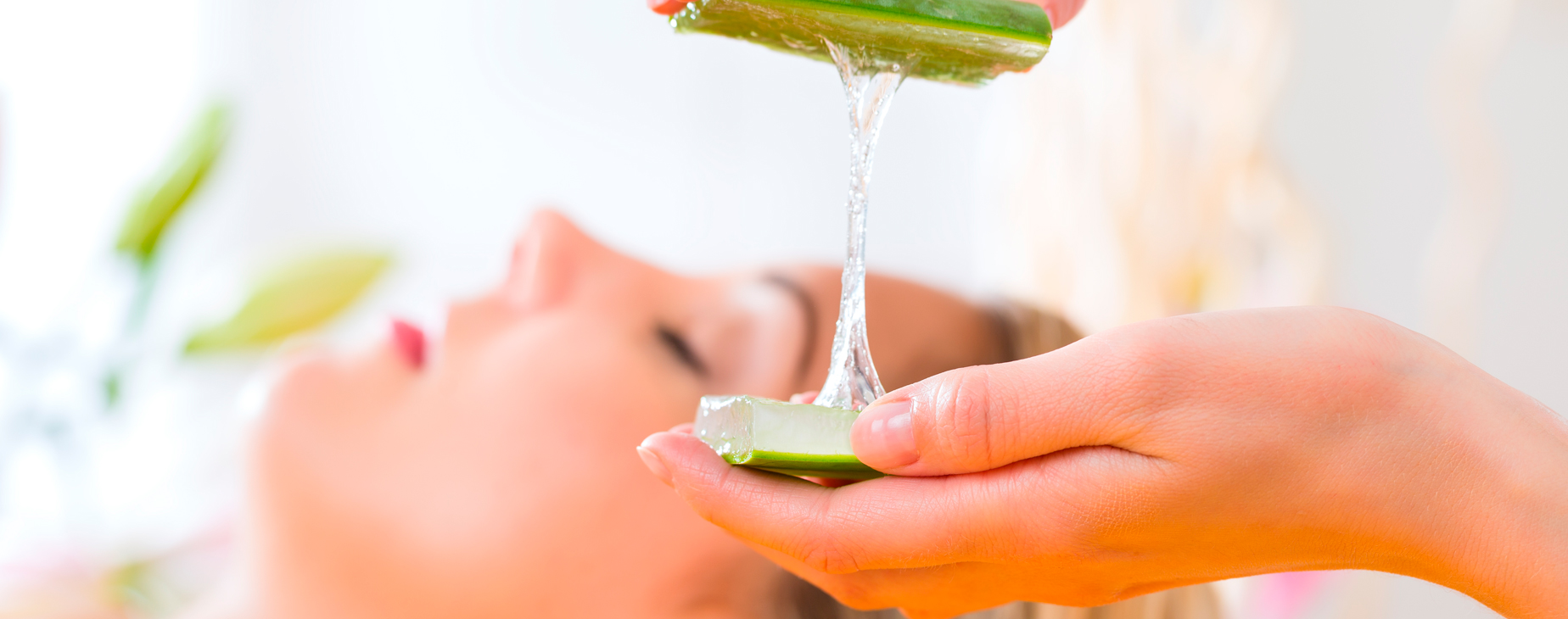Aloe is a natural purifier due to the presence of Saponins. It penetrates the three skin layers: Epidermis, dermis, and hypodermis, and it expels bacteria and fat deposits that block the pores. At the same time, the action of natural nutrients, minerals, vitamins, aminoacids, and enzymes stimulates the reproduction of new cells. It is also an important cellular regenerator, cicatrizer, tonifier, and it has a high level of penetration into the skin. Used regularly, Aloe prevents premature wrinkles and delays the appearance of old age wrinkles. Used for a long period of time, it is an excellent sunscreen against UV rays and removes skin marks caused by the sun.

According to studies conducted by Dr. Cambell — University of California, 2003 — “Aloe has proved particularly effective in healing radiation-induced burns, including sunburns, and wounds produced after radiotherapy treatments. The aloe gel promotes the correct interlacing of collagen fibers on the wounded area thanks to the cellular and tissular regeneration produced by the glycoproteins, reepithelization, and angiogenesis helped by allantoin, and by the anti-inflammatory and anti-microbial effects of polysaccharides and phenolic components.” In addition, it helps to heal mouth ulcers or irritative inflammatory wounds in the gastrointestinal mucosa.
Aloe is particularly effective in cases when wound healing is affected and delayed, as in diabetics. “Not only does it speed healing, but, compared to other treatments, it improves blood flow and maintains a higher sensitivity in the wounded area." Its antipsoriasis activity is highly important. Ricardo Gampel — Department of Immunology, University of California — explains that the penetration of the polysaccharids present in the Aloe Vera Gel into the skin helps it to be hydrated, as well as it occludes the dermis, and inhibits psoriatic plaques formation; therefore, the duration of the rash can be reduced significantly.
Gampel considers that skin alterations produced by the aging process and by solar radiation are due to the fact that degenerative changes are superior to regenerative capacity, which is expressed in the appearance of wrinkles and changes in skin pigmentation. Quoting Gampel aloe gel “prevents premature photoaging, re-establishes the balance between degenerative and regenerative changes, and stimulates the synthesis of skin collagen and elastin fibers. In a study published in the Medical Association of Thailand’s magazine, 27 patients with minor burns were treated with Aloe Vera Gel or with Vaseline (petroleum gel). Wounds treated with Aloe were healed in an average of 12 days, whereas those patients treated with vaseline did it in an average of 18 days.
Aloe minimizes skin wounds produced by cold temperatures. A study published in the Annals of Emergency Medicine establishes that ALOE is also effective for treating frostbite. 154 patients suffering from frostbite, both minor and severe, were given a standard treatment to treat this disease, which included antibiotics, ibuprofen, and stupes. A 67.9% of the patients who were also applied Aloe Vera cream recovered without losing tissue (amputation), compared to the remaining 32.7%.

